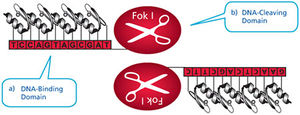A Review of Guillain-Barre Syndrome: Difference between revisions
| Line 13: | Line 13: | ||
<br><i>Italic</i> | <br><i>Italic</i> | ||
<br><b>Subscript:</b> H<sub>2</sub>O | <br><b>Subscript:</b> H<sub>2</sub>O | ||
<br><b>Superscript:</b> Fe<sup>3+</sup> | <br><b>Superscript:</b> Fe<sup>3+</sup> <br> | ||
Guillain-Barré syndrome is a rare autoimmune disorder characterized by neuropathy. Some of the symptoms of this disorder are weakness in legs, unsteady walking, feeling achy, shooting pain, high pulse, and labored breathing. Guillain-Barré syndrome has many different causes, and the majority of them are bacterial or viral in nature. Campylobacter, influenza virus, cytomegalovirus, Epstein-Barr virus, Zika virus, Hepatitis A/B/C/E, HIV, mycoplasma pneumonia, surgery, Hodgkin’s lymphoma, vaccinations (very rarely), and COVID-19 infections are all known to trigger the syndrome. Although these can trigger Guillain-Barré syndrome, the actual underlying cause of this disorder is unknown. It does not spread between people and it is not a heritable illness. | Guillain-Barré syndrome is a rare autoimmune disorder characterized by neuropathy. Some of the symptoms of this disorder are weakness in legs, unsteady walking, feeling achy, shooting pain, high pulse, and labored breathing. Guillain-Barré syndrome has many different causes, and the majority of them are bacterial or viral in nature. Campylobacter, influenza virus, cytomegalovirus, Epstein-Barr virus, Zika virus, Hepatitis A/B/C/E, HIV, mycoplasma pneumonia, surgery, Hodgkin’s lymphoma, vaccinations (very rarely), and COVID-19 infections are all known to trigger the syndrome. Although these can trigger Guillain-Barré syndrome, the actual underlying cause of this disorder is unknown. It does not spread between people and it is not a heritable illness. | ||
<br> | <br> | ||
Revision as of 00:36, 17 March 2021
Introduction
At right is a sample image insertion. It works for any image uploaded anywhere to MicrobeWiki. The insertion code consists of:
Double brackets: [[
Filename: PHIL_1181_lores.jpg
Thumbnail status: |thumb|
Pixel size: |300px|
Placement on page: |right|
Legend/credit: Electron micrograph of the Ebola Zaire virus. This was the first photo ever taken of the virus, on 10/13/1976. By Dr. F.A. Murphy, now at U.C. Davis, then at the CDC.
Closed double brackets: ]]
Other examples:
Bold
Italic
Subscript: H2O
Superscript: Fe3+
Guillain-Barré syndrome is a rare autoimmune disorder characterized by neuropathy. Some of the symptoms of this disorder are weakness in legs, unsteady walking, feeling achy, shooting pain, high pulse, and labored breathing. Guillain-Barré syndrome has many different causes, and the majority of them are bacterial or viral in nature. Campylobacter, influenza virus, cytomegalovirus, Epstein-Barr virus, Zika virus, Hepatitis A/B/C/E, HIV, mycoplasma pneumonia, surgery, Hodgkin’s lymphoma, vaccinations (very rarely), and COVID-19 infections are all known to trigger the syndrome. Although these can trigger Guillain-Barré syndrome, the actual underlying cause of this disorder is unknown. It does not spread between people and it is not a heritable illness.
There are four main types of Guillain-Barré syndrome: acute inflammatory demyelinating polyradiculoneuropathy, Miller Fisher syndrome, Acute motor axonal neuropathy, and acute motor-sensory axonal neuropathy.
Section 1
Include some current research in each topic, with at least one figure showing data.
Section 2
Include some current research in each topic, with at least one figure showing data.
Section 3
Include some current research in each topic, with at least one figure showing data.
Conclusion
Overall paper length should be 3,000 words, with at least 3 figures.
References
Edited by student of Joan Slonczewski for BIOL 238 Microbiology, 2009, Kenyon College.

